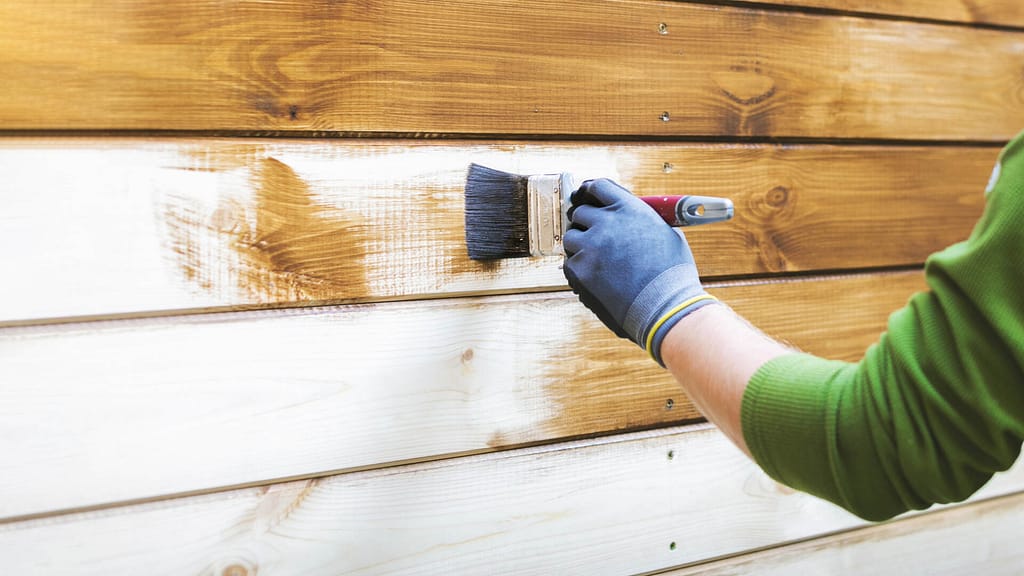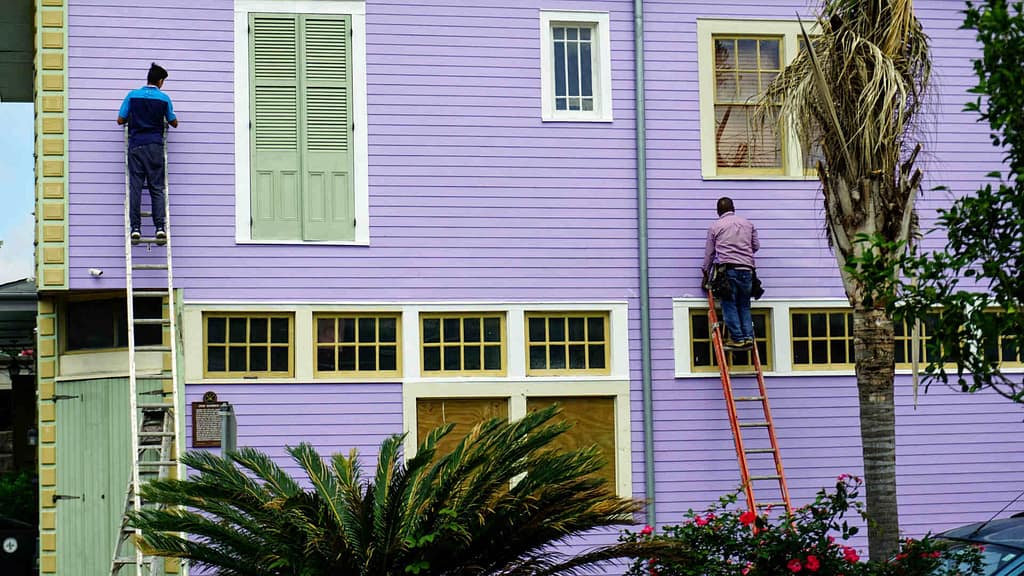
Can you paint siding in Virginia? Yes, you can! This blog will guide you through selecting materials, understanding regulations, and deciding on professional help.
Table of contents
Understanding Siding Materials
When considering whether you can paint siding in Virginia, it’s essential to first understand the types of siding materials commonly used in homes across the state. Each material has its unique properties, affecting how you should approach painting them. Here’s a breakdown of the most popular siding materials in Virginia:
- Vinyl Siding: One of the most prevalent siding choices due to its durability and low maintenance. It comes in a variety of colors, and while it doesn’t require frequent repainting, you can paint it to refresh its look or change colors. Before painting, ensure the vinyl is in good condition and use a high-quality, acrylic latex paint designed for exterior use on vinyl.
- Wood Siding: Offers a classic and timeless appeal, making it a favorite for many. It requires more maintenance than other types of siding, especially in Virginia’s humid climate, which can lead to moisture damage. Painting wood siding not only enhances its appearance but also provides an additional layer of protection against the elements. Use a primer suited for wood and a paint that can withstand Virginia’s weather.
- Aluminum Siding: Known for its strength and resistance to rust. Like vinyl, it often comes pre-painted, but over time, this paint can fade or chip. Repainting aluminum siding can restore its original luster or update its color. Clean the surface thoroughly and use a primer designed for metal surfaces before applying 100% acrylic latex paint.
- Fiber Cement Siding: Extremely durable and resistant to decay, making it an excellent choice for Virginia’s varied climate. It can mimic the appearance of wood, brick, or stone. Fiber cement is often pre-painted, but it can also be painted on-site. Ensure the surface is clean and dry before applying a high-quality acrylic paint specifically formulated for fiber cement siding.
Pros and Cons of Painting Each Type of Siding Material

If you’re thinking about refreshing your home’s exterior by opting to paint your siding in Virginia, it’s crucial to understand both the advantages and disadvantages of using different siding materials.
Vinyl Siding
Pros:
- Refreshes the look with a wide range of color options.
- Can be more cost-effective than replacing siding.
- Paint can protect against UV rays and weathering.
Cons:
- Requires specific types of paint (acrylic latex) to prevent warping due to heat absorption.
- Not all vinyl siding is ideal for repainting, especially if it’s older and brittle.
Wood Siding
Pros:
- Enhances the natural beauty of the wood with color.
- Adds an additional layer of protection against moisture and pests.
- Allows for customization with a wide variety of stains and paints.
Cons:
- Requires regular maintenance, including scraping and repainting due to peeling and fading.
- Can be susceptible to moisture if not properly sealed.
Aluminum Siding
Pros:
- Painting can cover up dents, scratches, and fading.
- Modern paints can adhere well and offer long-lasting results.
- Relatively easy to paint with the right preparation.
Cons:
- Older aluminum siding may require extensive surface preparation.
- Paint may chip or peel if not applied correctly or without the proper primer
Fiber Cement Siding
Pros:
- Holds paint very well, often better than wood.
- Paint lasts longer due to the material’s resistance to expansion and contraction.
- Offers flexibility in changing the color compared to other siding types.
Cons:
- Can be more labor-intensive to paint due to the need for specific types of paint and primers.
- Might require professional painting services to ensure proper application.
Legal and Environmental Considerations
When deciding to paint siding in Virginia, it’s crucial to consider both legal and environmental factors. These considerations ensure that your painting project is not only successful but also compliant with state regulations and kind to the environment.
Local Regulations and Permits
In Virginia, the need for permits before painting your home’s exterior can vary by locality. Some areas may require permits if the painting involves significant structural changes or if your home is located in a historic district. Always check with your local building department or homeowners’ association (HOA) for specific rules and regulations before starting your project. This ensures that all local guidelines are followed and avoids any potential fines or complications.
Environmentally Friendly Painting Practices
Choosing environmentally friendly practices when deciding to paint siding in Virginia is beneficial for both your health and the planet. Here are key practices to consider:
- Use Low-VOC Paints: Volatile Organic Compounds (VOCs) are chemicals found in many traditional paints that can cause health issues and air pollution. Low-VOC paints minimize these risks and are better for indoor air quality. These paints are readily available and perform just as well as traditional paints.
- Proper Disposal of Materials: Properly disposing of paint and painting materials is crucial to avoid environmental contamination. Never pour leftover paint down drains or into the ground. Many areas in Virginia have designated facilities for disposing of hazardous waste, including old paint and solvents. Additionally, try to recycle or donate unused paint if possible.
By adhering to local regulations and adopting eco-friendly painting practices, you can ensure that your siding painting project is both legally compliant and environmentally responsible.
Hiring Professionals
When considering the question, ‘Can you paint siding in Virginia?’ it is essential to hire a siding expert. American Home Contractors, your trusted siding contractors in Virginia can conduct a detailed assessment of your siding’s current condition to determine if it’s suitable for painting or if it requires repairs or replacements beforehand. This evaluation is crucial to ensure that you don’t waste resources on siding that may be too damaged or unsuitable for painting.
Additionally, they are well-versed in local regulations concerning exterior modifications, including painting. Their knowledge helps ensure compliance with these regulations, thereby avoiding any legal issues or fines. They also have access to high-quality paints and equipment, which might not be readily available to homeowners. They are familiar with the best products for different siding materials and understand how Virginia’s climate can impact paint durability and appearance.
Conclusion
In conclusion, yes, you can definitely paint siding in Virginia. This guide has shown you the best practices for painting different siding materials like vinyl, wood, aluminum, and fiber cement, each with its own set of considerations. It’s important to understand the specific needs of your siding type to ensure a successful and durable paint job.
Before starting your project, remember to check local regulations and consider environmental factors such as using low-VOC paints. Hiring a professional painter can also be a wise choice to guarantee that the work meets all standards and your home looks great. They bring expertise that ensures your siding is painted correctly and lasts long, enhancing your home’s curb appeal and protection.
Fact checked by Adrian Catolico – 4/19/2024